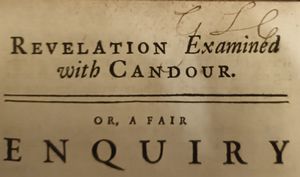Difference between revisions of "George Lenox-Conyngham 1752-1816"
| Line 21: | Line 21: | ||
<div id="sourcelist"> | <div id="sourcelist"> | ||
*Lenox-Conyngham, Mina, ''Springhill: An Old Ulster House and the People Who Lived in It'', Belfast, 2005, 104-161. | *Lenox-Conyngham, Mina, ''Springhill: An Old Ulster House and the People Who Lived in It'', Belfast, 2005, 104-161. | ||
| − | *[https://www.nidirect.gov.uk/sites/default/files/publications/lenox-conyngham-papers.pdf Public Records Office of Northern Ireland, ''Introduction to the Lenox-Conyngham Papers'' | + | *[https://www.nidirect.gov.uk/sites/default/files/publications/lenox-conyngham-papers.pdf Public Records Office of Northern Ireland, ''Introduction to the Lenox-Conyngham Papers'', 2007.] |
*Purcell, Mark, ''The Big House Library in Ireland'', Swindon, 2011, 47-48. | *Purcell, Mark, ''The Big House Library in Ireland'', Swindon, 2011, 47-48. | ||
Revision as of 10:12, 13 April 2023
George LENOX-CONYNGHAM, 1752-1816
Biographical Note
George Lenox-Conyngham (1752-1816) was the son of Clotworthy Lenox (b.1707) and Anne Conyngham (1724-1777). Born George Lenox, he added Conyngham to his name under terms of the will of his uncle, Colonel William Conyngham (1723-1784). He succeeded his uncle to the property of Springhill, County Londonderry.
George Lenox-Conyngham was a Colonel of ‘The Springhill Union’ Volunteer unit, which represented a combination of ‘The Moneymore or Drapers Volunteers’ and 'The Coagh Volunteers' raised by his uncle in 1779. After such volunteer units were disbanded by the Dublin Government in 1792, he was a Major in the County Londonderry Militia Regiment.
In 1779, George Lenox-Conyngham married Jane Hamilton (d.1793), daughter of John Hamilton (d.b.1775) and Jean Hamilton (n.d.) of Castlefin, County Donegal. Jean Hamilton was both George Lenox-Conyngham’s mother-in-law and his aunt by marriage to Colonel William Conyngham. His second marriage, in 1794, was to Olivia Irvine, daughter of Colonel William Irvine (d.1814) and Sophia Lowther (n.d.) of Castle Irvine, County Fermanagh. George Lenox-Conyngham appears to have been a devoted family man who suffered from periods of profound melancholy. He committed suicide in November 1816.
Books
The full extent and disposition of George Lenox-Conyngham's library are not known. Approximately 42 books remain at the National Trust’s Springhill which may be connected to him. These books are varied, exclusively in English, and were published in Dublin or London. They include works of history, law, religion, English drama, poetry, fiction, classical works, and descriptions of European travel.
Characteristic Markings
George Lenox-Conyngham inscribed his books on the title page or front free endpaper with either his initials, ‘G.L.C.’, or signature, ‘G.L. Conyngham’. Prior to taking the name Conyngham, his books are signed ‘Geo: Lenox’ and may be dated.
Sources
- Lenox-Conyngham, Mina, Springhill: An Old Ulster House and the People Who Lived in It, Belfast, 2005, 104-161.
- Public Records Office of Northern Ireland, Introduction to the Lenox-Conyngham Papers, 2007.
- Purcell, Mark, The Big House Library in Ireland, Swindon, 2011, 47-48.
